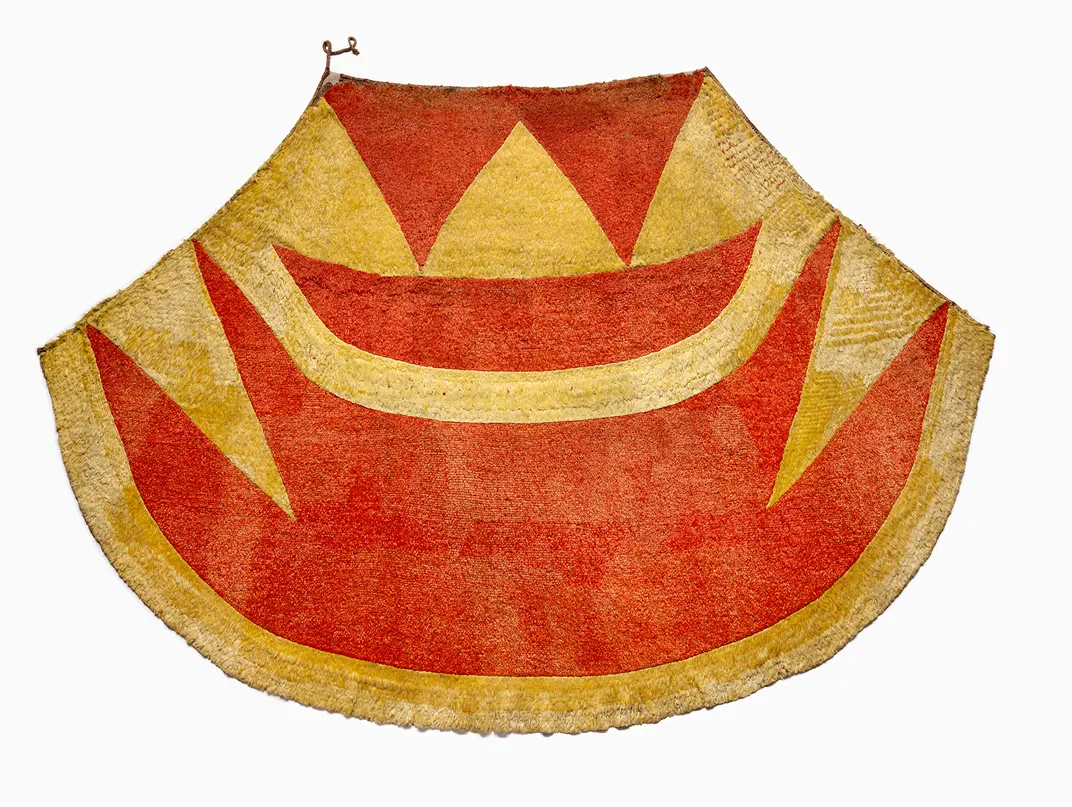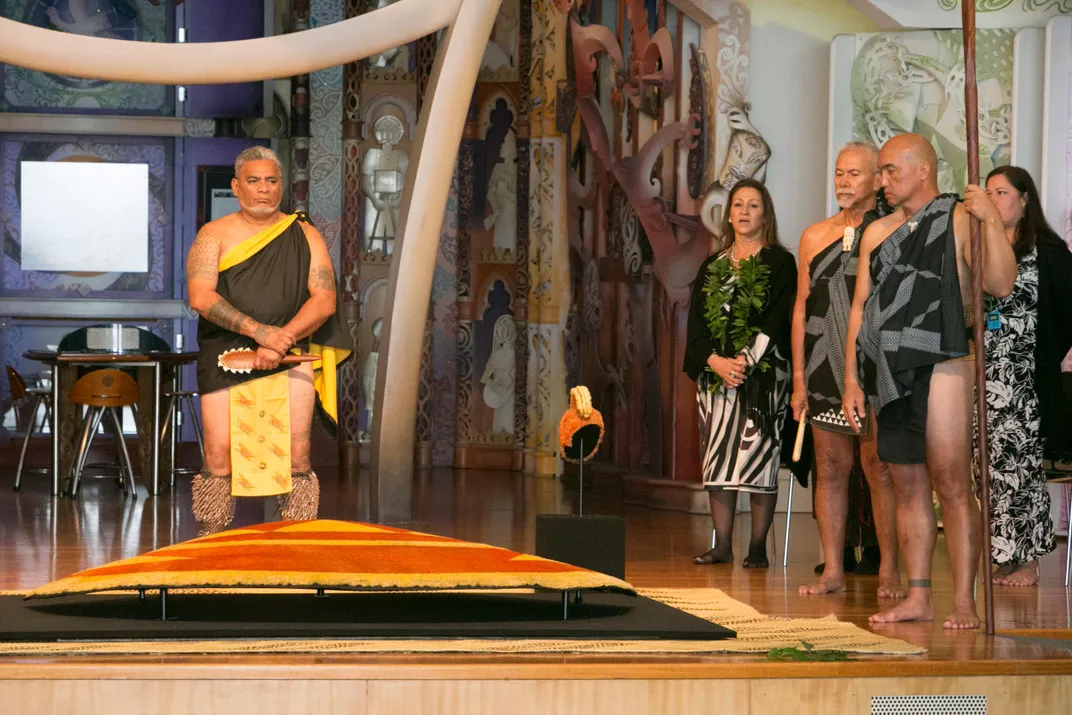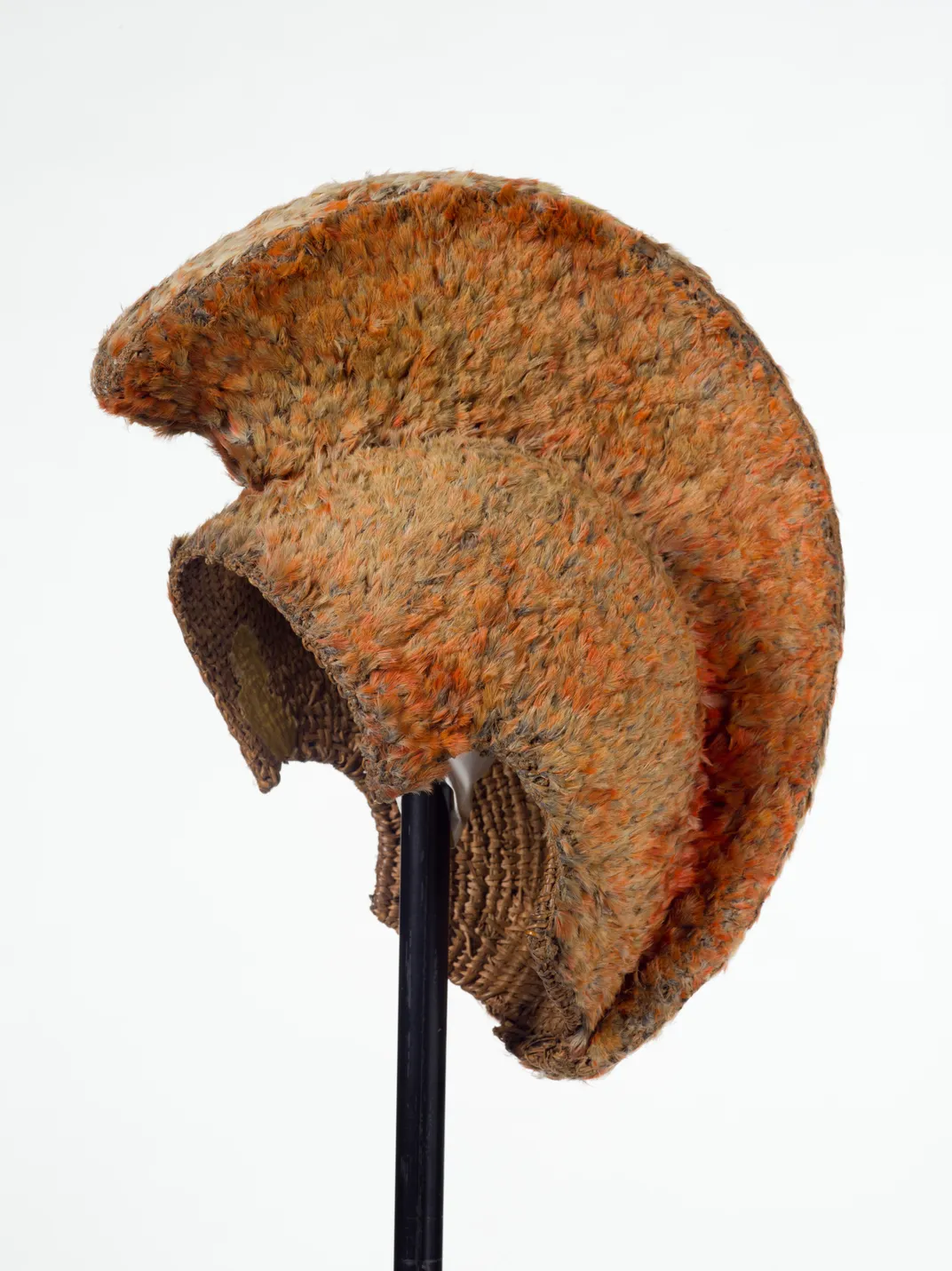Hawaiian Chief’s Cloak and Helmet Repatriated After 241 Years
A New Zealand museum initially returned the artifacts, given to Captain James Cook in 1779, on a long-term loan in 2016
/https://tf-cmsv2-smithsonianmag-media.s3.amazonaws.com/filer/ae/74/ae74d915-0bad-4d2a-bf23-3c9e014da8de/p1360528-2.jpg)
New Zealand has formally repatriated an intricately woven ʻahu ʻula (feathered cloak) and a brightly colored mahiole (helmet) that changed hands during a pivotal moment in Hawaiian history, officials announced last week.
The Museum of New Zealand Te Papa Tongarewa (Te Papa), which has housed the artifacts since 1912, returned the attire to Honolulu’s Bernice Pauahi Bishop Museum on long-term loan in 2016. Now, a joint partnership between the Office of Hawaiian Affairs (OHA) and the two museums has ensured the cloak and helmet will remain in Hawaiʻi “in perpetuity.”
Hawaiian Chief Kalaniʻōpuʻu gave the garments to British explorer James Cook during a fateful meeting in Kealakekua Bay in late January 1779. Cook’s then-lieutenant, James King, described the encounter in his journal, writing that the chief “got up & threw in a graceful manner over the Captn’s Shoulders the Cloak he himself wore, & put a feathered Cap upon his head.”
Kalaniʻōpuʻu offered these gifts as an act of formal diplomacy, the OHA explains in a documentary on the items’ history. Such fine featherwork was reserved for Native Hawaiian royalty, or ali‘i, according to the statement.
For centuries, local artisans labored to capture small birds whose delicate feathers were then woven onto capes, helmets and other objects. Kalaniʻōpuʻu’s cape alone is estimated to contain feathers from 20,000 birds. The plumes are carefully arranged on elaborate netting constructed out of olonā fibers.
The ʻahu ʻula was designed to demonstrate the efficacy of its owner, the museums note in the statement: “It embodied the life essence of a thriving, abundant environment, which is the telltale sign of leadership, as it takes a healthy forest ecosystem to produce enough bird feathers and cordage to make these regal pieces.”
Melanie Y. Ide, director of the Bishop Museum, tells Hawaii News Now that the objects are a stunning reminder of the islands’ environmental riches.
“The materials themselves really reflect this abundance of natural heritage woven into these pieces that are just exquisite,” she says.
Kalaniʻōpuʻu and Cook’s ill-fated meeting marked the beginning of European contact with Hawaiʻi. Diseases introduced by Cook and his crew decimated the islands’ population; by 1840, the number of Native Hawaiians had dropped by 84 percent, a 2015 Pew Research Center study found.
Cook returned to Hawaiʻi twice following his initial visit in January 1778. The second time, his encounters with locals were far less friendly, and during the third trip, Cook and four of his men were killed in a confrontation—the details of which remain hazy at best.
The captain’s crew brought Kalaniʻōpuʻu’s ʻahu ʻula and mahiole back to England, where they ended up in possession of British collector Lord St. Oswald. In 1912, the nobleman donated the garments to Te Papa’s predecessor, the Dominion Museum.
“Woven into these taonga is the story of our Pacific history, with all its beauty, challenges and complexity,” said Arapata Hakiwai, Māori co-leader of Te Papa, in 2016, when the items were returned to Hawaiʻi after 237 years away.
“Te Papa was founded on the principle of Mana Taonga, which recognizes the deep connections of taonga to their source communities,” added Hakiwai. “Returning these taonga to Hawai‘i is a powerful example of that principle in action.”
Officials from the Bishop Museum, Te Papa and the OHA started discussing the possibility of repatriating the artifacts in 2013, according to the statement. They have been on view at the Bishop Museum since 2016.
“After more than a century in Te Papa’s care, we are humbled to accept the kuleana (responsibility) of caring for the ʻahu ʻula and mahiole of Kalaniʻōpuʻu,” says Ide in the statement. “With their extraordinary presence, they give the people of Hawai‘i a tangible connection to the past, and to ancestors whose mana remain strongly rooted.”
/https://tf-cmsv2-smithsonianmag-media.s3.amazonaws.com/accounts/headshot/nora.png)



/https://tf-cmsv2-smithsonianmag-media.s3.amazonaws.com/accounts/headshot/nora.png)